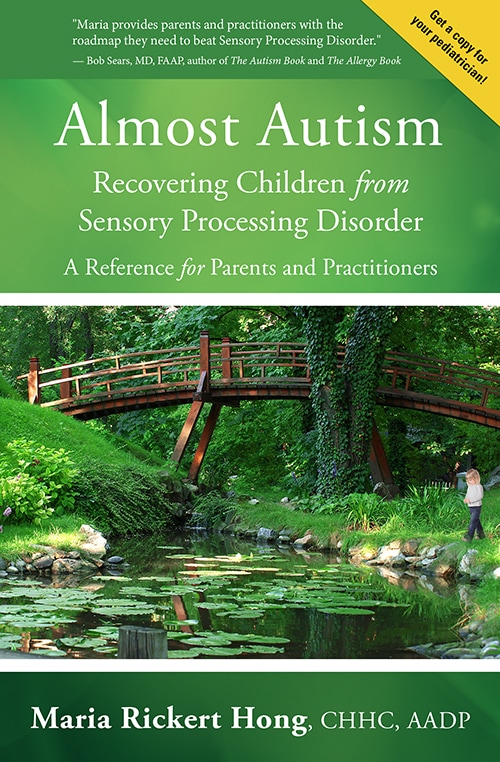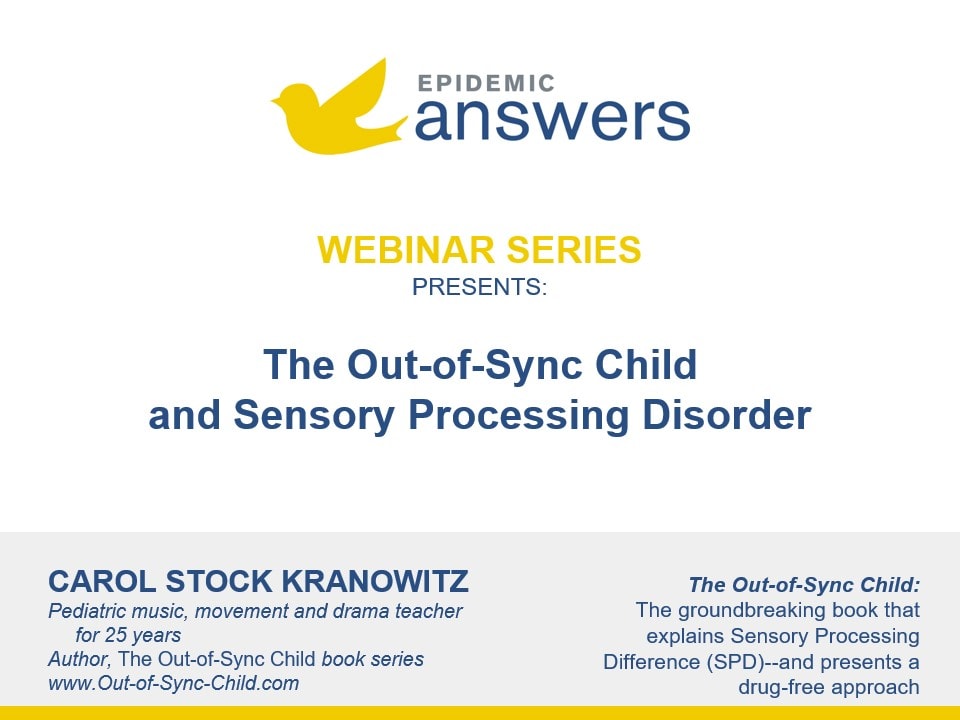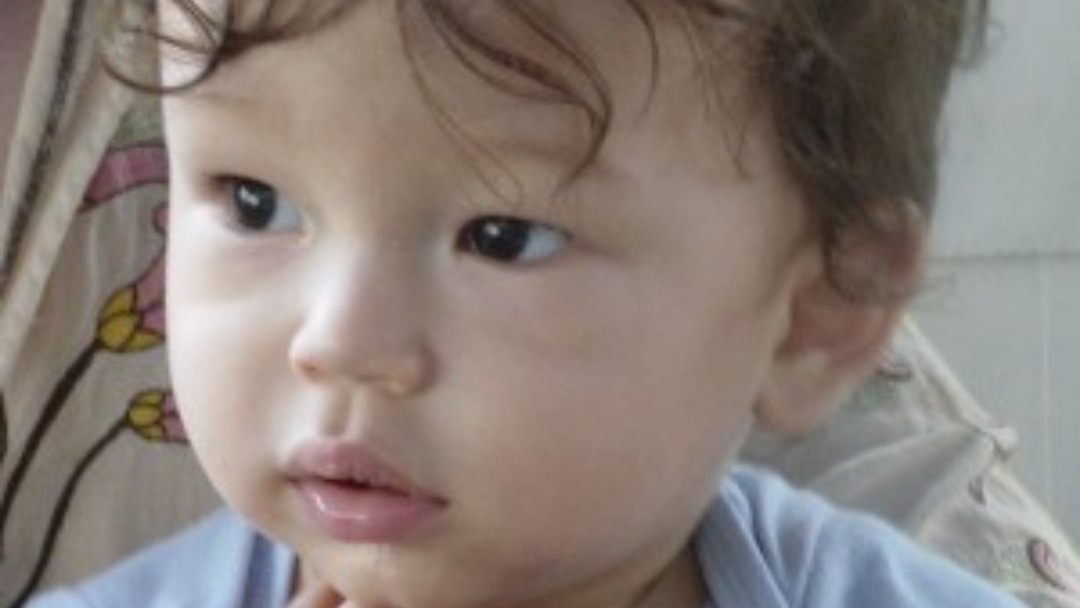What Is Sensory Processing Disorder?
Sensory Processing Disorder is a condition in which the brain has faulty signaling coming in from the eight senses (vision, hearing, taste, touch, smell, vestibular, proprioceptive and interoceptive) of the body. Because it is typically seen in children with autism, it is also sometimes known as almost autism. However, SPD can also be a stand-alone disorder, although it is still not recognized as a distinct disorder in the DSM-V (The Diagnostic and Statistical Manual of Mental Disorders, Fifth Edition). In addition, children with ADD/ADHD, learning disabilities and PANS/PANDAS often have SPD, though it is usually not recognized as such.
What’s Different About This Book?
Whereas most books about SPD such as Carol Stock Kranowitz’s groundbreaking The Out-of-Sync Child discuss what SPD is, how sensory processing differences affect children and how sensory-integration occupational therapy can help, this book goes much, much deeper. It not only discusses and shows through peer-reviewed medical research how root causes contribute to SPD, but it also educates parents and practitioners about other therapies that can really make a positive difference in a child’s symptoms.
Root Causes of SPD
Maria often wondered why the symptoms she saw in her sons such as colic, developmental delays, cradle cap, acid reflux, chronic ear infections, eczema, failure to thrive, asthma, allergies, hyperlexia, sleep issues, snoring, low muscle tone (hypotonia), constant colds and chronic constipation (collectively known as soft signs, although there are others) were so common in other children with SPD, autism and ADHD.
She wasn’t getting an answer to these questions and was only getting multiple medications for her children from their pediatricians, allergist and gastroenterologist. She began having her own health problems and started seeing a local naturopath upon a friend’s recommendation, and he not only began improving her health with his recommendations for dietary changes and supplements, but he also taught her how all of these conditions share many of the same root causes.
Given that she had been a Wall Street sell-side equity research analyst before having children, she began researching and investigating these root causes, as was her nature to do. In this book, Maria produces the fruits of her research labors and shows throughout the book that labels such as SPD, autism, ADHD, etc. don’t really matter so much as do the root causes, which are often the same. She shows that each child is different and has likely had different exposures to these root causes which are:
- Toxicity
- Gut dysbiosis
- Immune dysregulation
- Chronic inflammation
- Nutritional deficiencies
- Hormonal imbalances
- Birth trauma
Her knowledge is based not only on information from peer-reviewed medical research studies but also on books from authors such as Kenneth Bock MD, Russell Blaylock MD and Sherry Rogers MD.
Therapies That Can Help
Taking away the toxins and boosting bioindividualized nutrition can undo these root causes with what’s known as a biomedical approach, which includes making dietary changes such as a specialized diet. What’s unusual in this book is that Maria writes about rewiring the body and brain together with specialized therapies such as:
Her main thesis for healing in this book is to reduce stress from the total load of stressors/root causes so the body can heal because the body cannot fully heal if it is in a state of stress.
Conclusion
If you’re interested in understanding why your child has SPD as well as a practical, how-to guide for improving your child’s symptoms, you’ll want to pick up a copy of this bestselling book. Maria does an excellent job of translating current medical research and breaking it down into bite-sized chunks in order to make it more digestible for stressed-out parents.
About Maria Rickert Hong CHHC AADP
Maria Rickert Hong is the Education & Media Director for Epidemic Answers. In addition, she is a Certified Holistic Health Counselor who specializes in helping parents making dietary and lifestyle changes for children with Sensory Processing Disorder (SPD), autism, ADHD, allergies, asthma, autoimmune and more. She also helps tired mothers of special-needs children reclaim their energy.
Maria has recovered her sons from SPD, asthma and acid reflux, and is the author of Almost Autism: Recovering Children from Sensory Processing Disorder, A Reference for Parents and Practitioners.
She is also a co-author of Epidemic Answers’ Brain Under Attack: A Resource for Parents and Caregivers of Children with PANS, PANDAS, and Autoimmune Encephalitis.

She writes many of the pages and posts on our website and elsewhere.
Maria is a former sell-side Wall Street equity research analyst covering the oil services sector at Salomon Smith Barney and Lehman Brothers. Later, she covered the gaming, lodging & leisure sector at Jefferies & Co. and Calyon Securities. She quit working on Wall Street when her first son was born.
Prior to working on Wall Street, she was a marketing specialist for Halliburton in New Orleans, where she also received her MBA in Finance & Strategy from Tulane University. You can find out more about her at her website MariaRickertHong.com
Still Looking for Answers?
Visit the Epidemic Answers Practitioner Directory to find a practitioner near you.
Join us inside our online membership community for parents, Healing Together, where you’ll find even more healing resources, expert guidance, and a community to support you every step of your child’s healing journey.
Sources & References
Aguilera, M., et al. Antibiotic-induced dysbiosis alters host-bacterial interactions and leads to colonic sensory and motor changes in mice. Gut Microbes. 2015;6(1):10-23.
Ahn, R.R., et al. Prevalence of parents’ perceptions of sensory processing disorders among kindergarten children. Am J Occup Ther. May-Jun 2004;58(3):287-93.
Ben-Sasson, A., et al. Sensory over-responsivity in elementary school: prevalence and social-emotional correlates. J Abnorm Child Psychol. 2009 Jul;37(5):705-16.
Boat, T.F., et al. Prevalence of Learning Disabilities. Mental Disorders and Disabilities Among Low-Income Children. Washington (DC): National Academies Press (US); 2015 Oct 28. 16.
Borre, Y.E., et al. Microbiota and neurodevelopmental windows: implications for brain disorders. Trends Mol Med. 2014 Sep;20(9):509-18.
Darling, A.L., et al. Association between maternal vitamin D status in pregnancy and neurodevelopmental outcomes in childhood: results from the Avon Longitudinal Study of Parents and Children (ALSPAC). Br J Nutr. 2017 Jun;117(12):1682-1692.
Egset, K., et al. Magno App: Exploring Visual Processing in Adults with High and Low Reading Competence. Scandinavian Journal of Educational Research. 07 Jan 2020.
Hertz-Picciotto, I., et al. Organophosphate exposures during pregnancy and child neurodevelopment: Recommendations for essential policy reforms. PLoS Med. 2018 Oct 24;15(10):e1002671.
Maenner, M.J., et al. Prevalence and Characteristics of Autism Spectrum Disorder Among Children Aged 8 Years – Autism and Developmental Disabilities Monitoring Network, 11 Sites, United States, 2018. MMWR Surveill Summ. 2021 Dec 3;70(11):1-16.
Tomcheck, S.D., et al. Sensory Processing in Children with and without Autism: A Comparative Study Using the Short Sensory Profile. American Journal of Occupational Therapy. 2007. 61, 190-200.
Warner, B.B. The contribution of the gut microbiome to neurodevelopment and neuropsychiatric disorders. Pediatr Res. 2019 Jan;85(2):216-224.
Zablotsky, B., et al. Prevalence and Trends of Developmental Disabilities among Children in the United States: 2009-2017. Pediatrics. 2019 Oct;144(4):e20190811.
Zaigham, M., et al. Prelabour caesarean section and neurodevelopmental outcome at 4 and 12 months of age: an observational study. BMC Pregnancy and Childbirth. 2020 (20)564.
Resources
Books
Biel, Lindsey. Raising a Sensory Smart Child: The Definitive Handbook for Helping Your Child with Sensory Processing Issues. Revised Edition, 2009
Hong, Maria Rickert. Almost Autism: Recovering Children from Sensory Processing Disorder, A Reference for Parents and Practitioners. 2014.
Kranowitz, Carol. The Out-of-Sync Child: Recognizing and Coping with Sensory Processing Disorder. Penguin Random House, revised edition 2022.
Websites
More To Explore
Join our email list to get free healing resources delivered right to your inbox.
Join our community

This information is not a substitute for medical advice, treatment, diagnosis, or consultation with a medical professional. It is intended for general informational purposes only and should not be relied on to make determinations related to treatment of a medical condition. Epidemic Answers has not verified and does not guarantee the accuracy of the information provided in this document.
© Copyright 2013-2024 Epidemic Answers. All rights reserved. Privacy Policy | Terms of Service | Disclaimer | Website by fuseStarter




